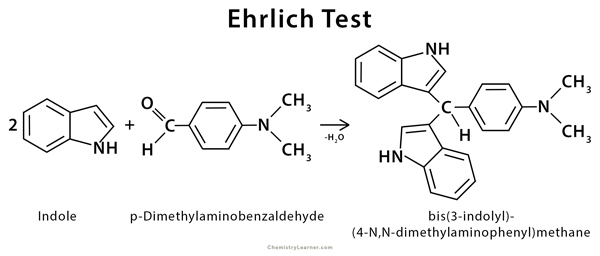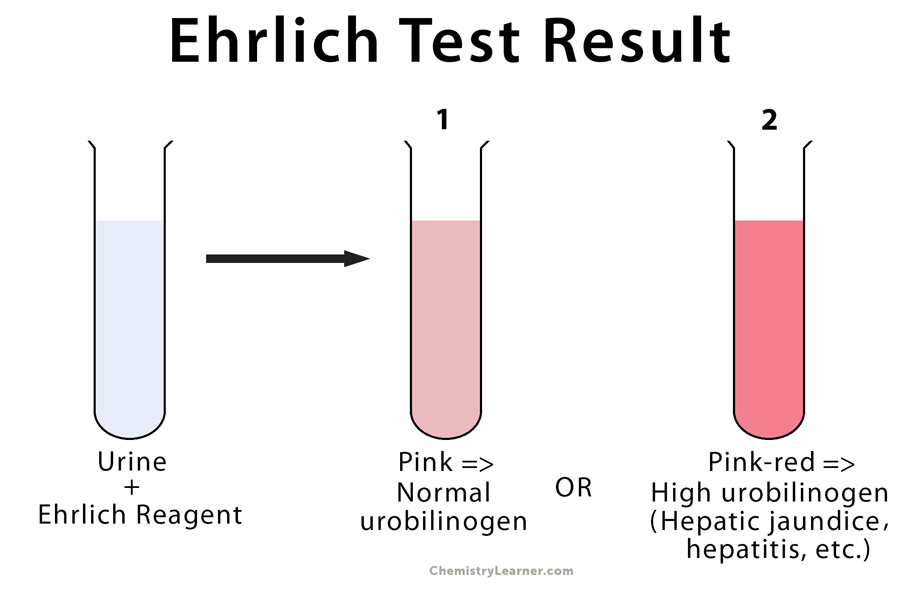Ehrlich Reagent
Definition: What is Ehrlich Reagent?
Ehrlich reagent contains p-dimethylaminobenzaldehyde (DMAB), which is used to test for indoles and urobilinogen. This reagent is employed for the Ehrlich test, also known as the Ehrlich aldehyde test. This test diagnoses liver diseases, hemolytic processes, occlusion of the common bile duct, and carcinoid syndrome. It is also used as a spot test to detect the presence of compounds like tryptamines (e.g., DMT) and ergoloids (e.g., LSD). Ehrlich test is named after Nobel Prize winner Paul Ehrlich, who used it to distinguish typhoid from simple diarrhea [1,2].
Preparation of Ehrlich Reagent
The reagent is prepared by dissolving 0.5 to 2.0 g of p–dimethylaminobenzaldehyde (DMAB) in 50 mL of 95% ethanol and 50 mL of concentrated hydrochloric acid. It is best used when fresh.
Principle and Result of Ehrlich Test
Ehrlich reagent is used to detect urobilinogen in urine. Urobilinogen is one of the bile pigments found in the urine in case of liver defects (epidemic jaundice and cirrhosis) or due to excessive bilirubin formation (hemolytic jaundice). The colorless urobilinogen reacts with the Ehrlich reagent in an acidic medium to form a pink-red condensing product, indicating a high urinary concentration [3-5].
References
- Definition – Bioscience.com.pk
- Definition – Reagent-tests.uk
- Principle – Wwchem.uwimona.edu.jm
- Result – Gpnotebook.com
- Results – Nature.com







Respected sir
Plz tell me the difference between Ehrlich A reagent and Ehrlich B reagent, their composition and usage
I am not sure what do you mean by Ehrich A and Ehrlich reagent.